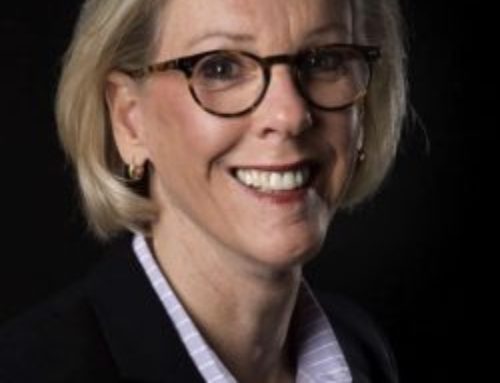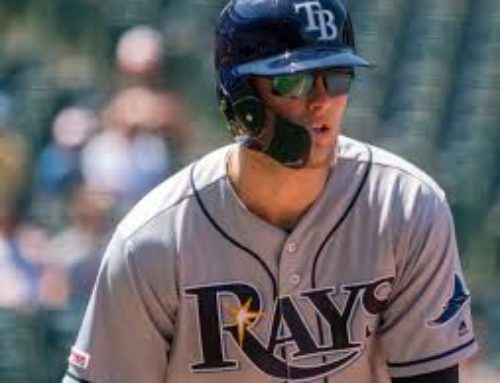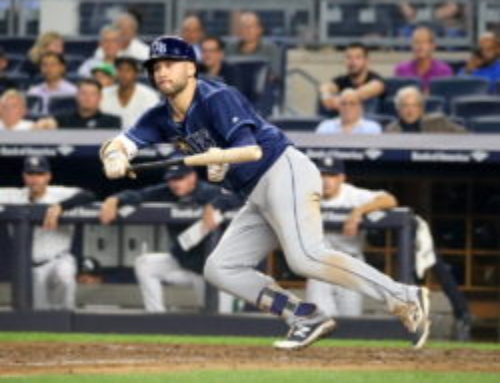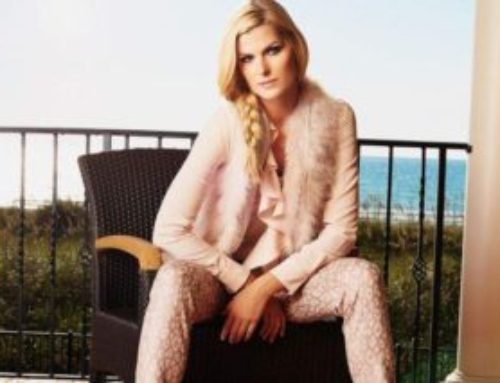By Joey Johnston
(c) Special to USF Athletics. Originally published May 1, 2020.
There’s intense interest in basketball all-time great Michael Jordan — the man, the myth, the legend — reflected in ESPN’s highly rated 10-part documentary, “The Last Dance.’’
It wasn’t covered in the documentary, but there’s a USF angle. Before Jordan’s game truly took flight, Coach Lee Rose’s Bulls traveled to Chapel Hill, N.C., on Dec. 12, 1981 for a showdown against the No. 1-ranked North Carolina Tar Heels at Carmichael Auditorium.
North Carolina 75, USF 39.
Jordan, a freshman playing in his fourth college game, had 16 points. The Tar Heels would capture the first national championship for Coach Dean Smith that season — with Jordan hitting the game-winning shot against Georgetown in the title game — but the early season focus obviously was on Tar Heel stars James Worthy and Sam Perkins, both future first-round NBA draft picks, along with stabilizing veterans Jimmy Black and Matt Doherty.
“No joke, I had never heard of Michael Jordan before that season started,’’ said USF’s Charlie Bradley, also a freshman that season, who still stands as the program’s all-time leading scorer.
“Here’s the most incredible thing to me,’’ said USF’s Tony Grier, then a senior guard. “Michael Jordan was not even in our scouting report.’’
Not even in the scouting report?
It was a different world. There was no Internet, no Twitter. The summer AAU circuit had not yet bloomed. ESPN was in its infancy. If you wanted information on the nation’s top basketball prospects, you could check Parade Magazine’s All-American team in your Sunday newspaper or the Street&Smith Preseason Basketball Annual.
It was still unusual for most college basketball games to be televised — a departure from today’s times when it’s unusual for a game to not be televised.
So even though the UNC-USF game became a footnote at best, it remains notable that the Bulls actually competed against a talented young performer who evolved into an All-American, an Olympic gold-medal winner, an NBA all-star and Most Valuable Player, an enduring marketing brand, a six-time world champion and an American sports icon perhaps comparable only to the likes of Babe Ruth and Muhammad Ali.
THE BULLS WERE HOT
Heading into the game at UNC, the Bulls had begun the program’s 11th season in the best possible manner.
The Bulls stood at 3-0 after winning the inaugural Florida Four event, defeating the Florida Gators (58-56) and Florida State Seminoles (82-67) at the then-Sun Dome. Sports Illustrated had dispatched a writer to the unique two-night tournament and the USF Bulls were the featured attraction in a two-page spread, about as good as it got for media attention in 1981.
It was giddy stuff for a program that seemingly had lost its way just a few seasons earlier. Very few things went right in 1979-80. North Carolina actually visited USF early that season — in what was supposed to be the Sun Dome dedication game — but the building wasn’t ready. At St. Petersburg’s Bayfront Center, the Tar Heels rolled, 93-62.
The Bulls were on their way to a 6-21 finish when four different facilities were used for home games. Coach Chip Conner was fired at midseason and interim coach Gordon Gibbons finished out.
USF promptly shocked the college basketball world by hiring Rose, coming off a Final Four appearance with Purdue University, as the new head coach who would usher the Bulls into their new on-campus facility.
Rose delivered quickly. In 1980-81, the Bulls were 18-11 and had a 12-game winning streak. The program earned its first-ever postseason bid, falling to UConn 65-55 in the National Invitational Tournament first round.
With brimming confidence — and a front line featured Jim Grandholm (7-feet), Willie Redden (6-foot-11) and Vince Reynolds (6-9) — the Bulls seemed ready for their closeup at North Carolina.
USF featured 6-3 junior guard David McGhee, who was a senior star at Wilmington (N.C.) Laney High School, when Jordan was cut from the varsity and played JV as a sophomore.
McGhee began his college career at North Florida Junior College before attending USF. At one point, he went back to Wilmington for Christmas. He attended a Laney basketball game to see a very different Jordan.
“Mike had gotten a whole lot bigger and a whole lot better,’’ McGhee said. “He became a McDonald’s All-American. He was very legitimate.
“I was telling my (USF) teammates, ‘Hey, this freshman they’ve got, I’ve seen him play at my high school. He’s really, really good.’ I mean, they listened to me, but the focus was on Worthy and Perkins. How was a freshman going to be a bigger priority than those guys?’’
UNC’s Smith gave the Bulls plenty of pregame respect.
“It will be an upset if they win because we are No. 1,’’ Smith said before the game. “But it won’t be a huge upset. I consider us one of the top 30 teams. I consider them one of the top 30. That’s not bad with 270 (programs) playing this game.’’
THE GAME
On a chilly Saturday night in Chapel Hill, there was basketball fever back in Tampa. The UNC-USF game was televised back to Tampa on Channel 44, a rare occurrence. At USF’s Fontana Hall, a 7-foot-high television was set up in the lobby, where hot dogs and beer were served.
The game was hotly contested — for a short time.
Jordan’s spectacular under-the-basket move and reverse layup made it 14-10 UNC. That began a 30-5 run for the Tar Heels, who led 42-15 at halftime. “It was like an avalanche,’’ Rose said.
Jordan’s first half: 12 points on 5-for-7 shooting.
“Michael Jordan was a great freshman, but none of us that night could have ever imagined he would become the greatest player of all time,’’ former USF guard Dave Bastian said.
“You could tell he was very confident and very polished,’’ Bradley said. “But that night, I think we were just impressed by their overall team. They kind of dismantled us.’’
Grier, particularly, has vivid Jordan memories.
“I remember McGhee talking him (Jordan) up and I was like, ‘Yeah, OK, right,’ ‘’ Grier said. “So I’m guarding Jordan on the wing and I went out there nonchalantly, one eye on him, one eye on another player.
“I blinked for a second. Jordan went right past me. They threw him an alley-oop. He dunked it. I’m like, ‘OK, he’s good.’ ‘’
In the first half, Grier received an outlet past near mid-court with a clear lane to the basket. Jordan was trailing and nearly caught up. But Grier accelerated, took off near the right elbow and threw down a vicious tomahawk dunk.
“I’ve always thought, ‘I might be the first guy ever to dunk on Jordan,’ ‘’ Grier said.
Alas, it didn’t count. Grier, using a hesitation step, had been called for traveling.
The second half was a forced march and the Bulls played a bit better, but the margin remained lopsided.
“They could have beaten us by 200 points if Dean wanted to,’’ Rose said. “He utilized his bench, played his walk-ons, played some who couldn’t even walk-on, everybody but the ushers.’’
THE AFTERMATH
As Rose said, “What you saw was a great team playing a great game.’’
Even with the upperclassman presence of Worthy and Perkins, it was maybe the first inkling that Jordan’s star potential was ready to bloom.
By season’s end, when the Bulls watched Jordan’s shot defeat Georgetown in the NCAA championship game, they realized the game’s experience was on the front end of something special.
“The locals knew Mike’s talent very well,’’ McGhee said. “He was a great player, sure. Nothing about it seemed magical. But when he hit the shot against Georgetown, that’s when the story really started.’’
Bradley was invited to the 1984 Olympic Trials at Indiana University, part of a 70-player contingent. By then, Jordan was a solid All-American and NBA stardom was being predicted.
“We know of each other,’’ Bradley said. “He has come to Tampa for events and we’ve talked. I admire him. He was my favorite player. It does mean something that I got to run the court with him at the beginning.’’
“By that time, he had figured it out,’’ Bastian said. “Physically, he was just different. He was just better than anybody else. And once he hit the NBA, it just shot to a whole new level.’’
There were once pitchers who were asked what it was like facing Ruth.
There were once young boxers who could talk of sparring with Ali.
Members of the 1981-82 Bulls, who finished 17-11 and didn’t make the postseason, can talk about guarding a young Michael Jordan.
“It does come up from time to time,’’ Bastian said. “I don’t mention it a whole lot. But with the attention that (the documentary) is getting, it is fun to think about now.’’
“There are pictures of me guarding Jordan and my kids think that’s pretty cool,’’ Grier said. “He’s the greatest to ever play the game. We all adore him as an athlete and he’s so much more than just a really great basketball player. Our program at USF got to compete against him. It wasn’t a good performance by us at all, but we can say we were there at the beginning. All these years later, it’s pretty special.’’
USF (39) — Reynolds 1 0-2 2, Grandholm 1 0-0 2, Redden 2 1-2 5, Grier 6 4-5 16, Bastian 1 0-0 2, Shepherd 0, Card 0 0-2 0, McGhee 0, Azcoitia 3 0-0 6, Bradley 3 0-0 6. Totals 17 5-11 39.
NORTH CAROLINA (75) — Doherty 4 4-4 12, Worthy 4 8-8 16, Perkins 4 2-2 10, Jordan 7 2-2 16, Black 2 0-0 4, Braddock 1 0-0 2, Brist 3 0-1 6, Barlow 0, Exum 1 0-1 2, Robinson 1 1-2 3, Makkonen 0, Martin 0 0-2 0. Totals 29 17-24 75.
Halftime — UNC 42-15. Fouled out — Redden (USF). Total fouls — USF 23, UNC 12. Att. — 10,000.





